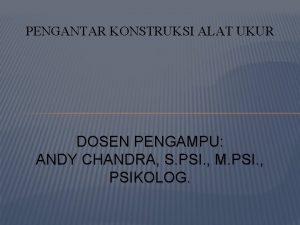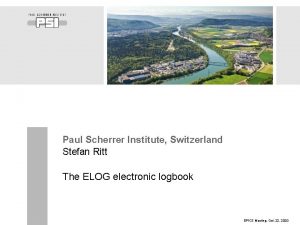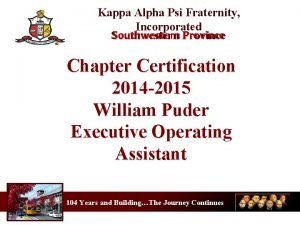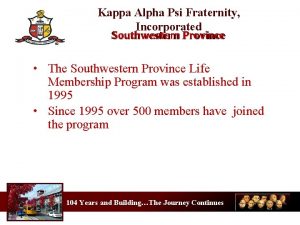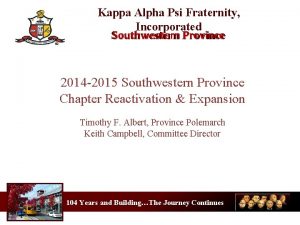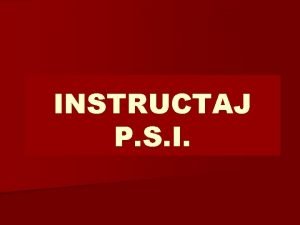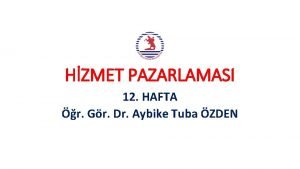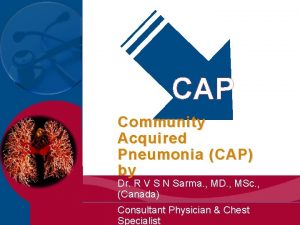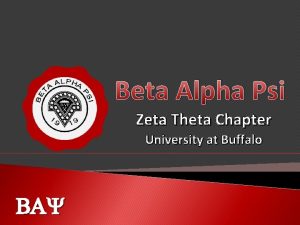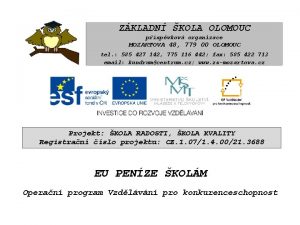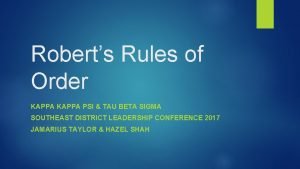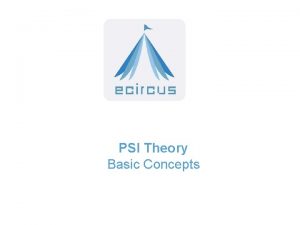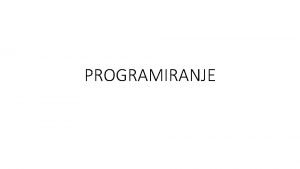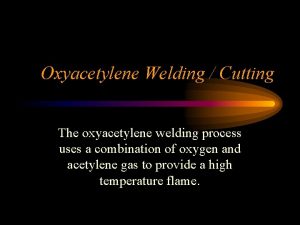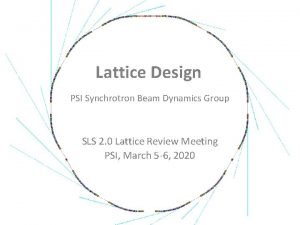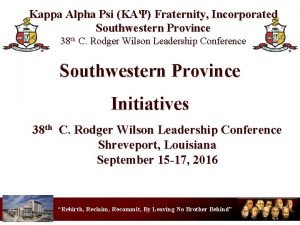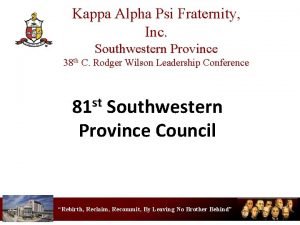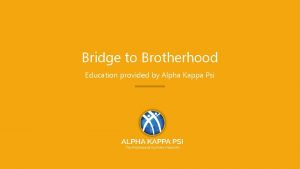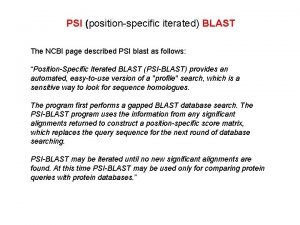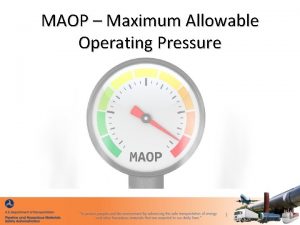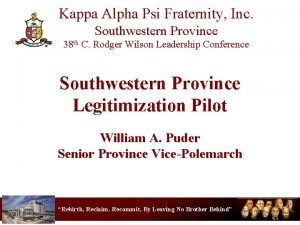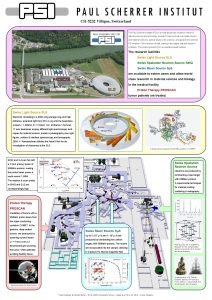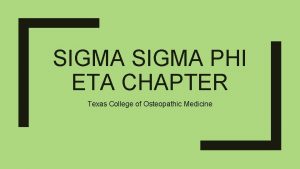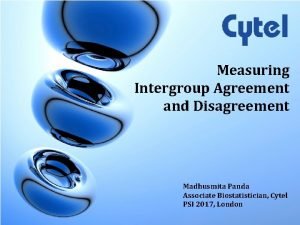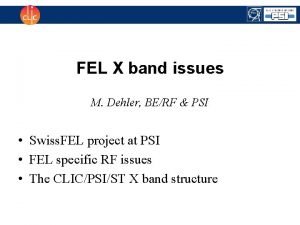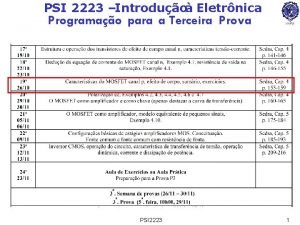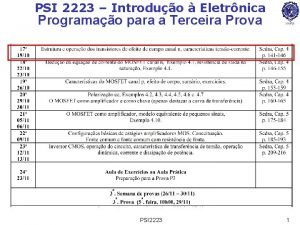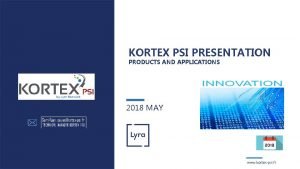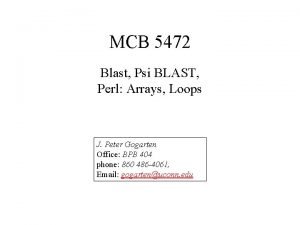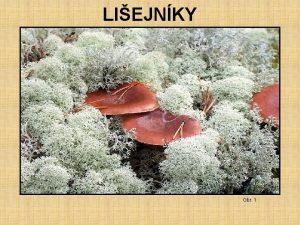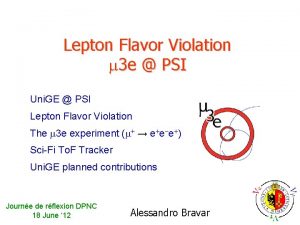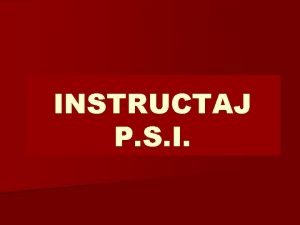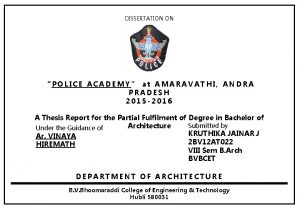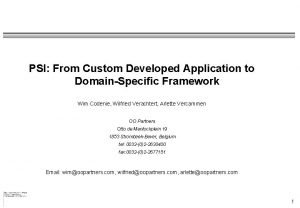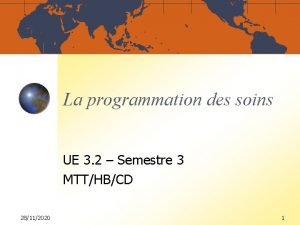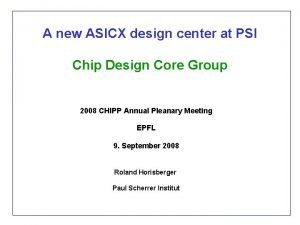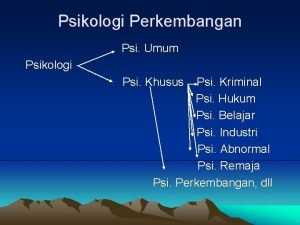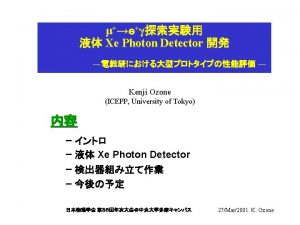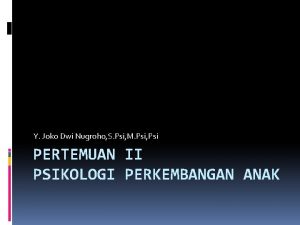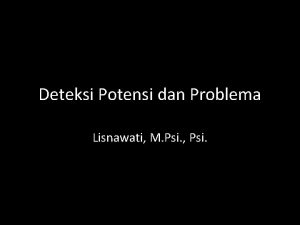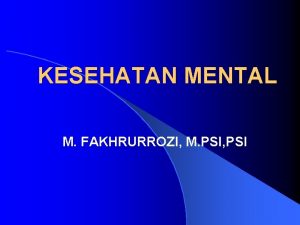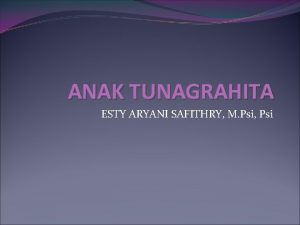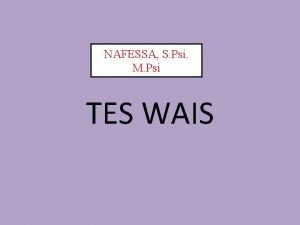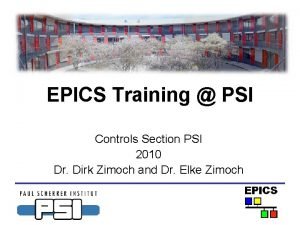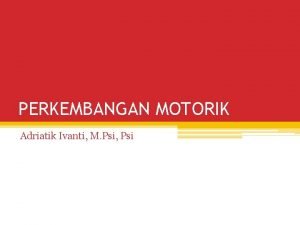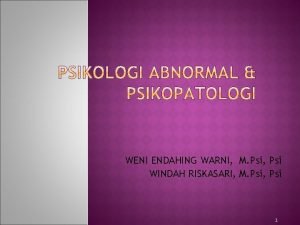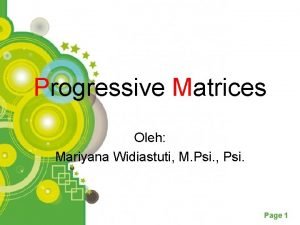A new m e g experiment at PSI





















































- Slides: 53

A new m e g experiment at PSI For the MUEGAMMA collaboration Stefan Ritt (Paul Scherrer Institute, Switzerland) • Motivation • Experimental Technique • New Electronics • Current status May 9, 2002 TRIUMF Canada 1

Physics Motivation • Minimal SM: Conservation of Baryons (proton decay) and Lepton Flavour (m+ e+ g) • Super Symmetry (SUSY) theories generically predict LFV • Processes like m+ e+ g are not “contaminated” by SM processes and therefore very clean • Discovered n oscillations are expected to enhance LFV rate • The search for m+ e+ g is therefore a promising field to find physics beyond the SM May 9, 2002 TRIUMF Canada 2

Prediction from SUSY SU(5) 1) • Based on observation of atmospheric neutrino anomaly • BR(m+ e+ g) 10 -14 • BR(t± m± g) 10 -9 This experiment 2) • Conversion(m e) 10 -16 1) 2) May 9, 2002 TRIUMF Canada J. Hisano et al. , hep-ph/9711348 MEGA collaboration, hep-ex/9905013 3

Connection with n oscillations 1) favored! This experiment J. Hisano and D. Nomura, Phys. Rev. D 59 (1999) 116005 May 9, 2002 TRIUMF Canada 4

Previous m+ e+ g Experiments Place Year Upper limit Author SIN (PSI), Switzerland 1977 < 1. 0 10 -9 A. Van der Schaaf et al. TRIUMF, Canada 1977 < 3. 6 10 -9 P. Depommier et al. LANL, USA 1979 < 1. 7 10 -10 W. W. Kinnison et al. LANL, USA 1986 < 4. 9 10 -11 R. D. Bolton et al. LANL, USA 1999 < 1. 2 10 -11 MEGA Collab. , M. L. Brooks et al. PSI ~2005 ~ 10 -14 This Experiment May 9, 2002 TRIUMF Canada Search for Lepton-Flavour Violation: 5

MEG Collaboration Institute Country Main Resp. Head Scientists Students ICEPP, Univ. of Tokyo Japan LXe Calorimeter T. Mori 12 2 Waseda University Japan Cryogenics T. Doke 5 2 INFN, Pisa Italy e+ counter, trigger, M. C. Bemporad 4 3 IPNS, KEK, Tsukuba Japan Supercoducting Solenoid A. Maki 5 - PSI Switzerland Drift Chamber, Beamline, DAQ S. Ritt 4 - BINP, Novosibirsk Russia LXe Tests and Purification B. Khazin 4 - Nagoya University Japan Cryogenics K. Masuda 1 - 35 May 9, 2002 TRIUMF Canada 7 6

Time Table now Planning 1997 1998 R&D 1999 2000 2001 Assembly 2002 2003 2004 Data Taking 2005 2006 2007 “large prototype” May 9, 2002 TRIUMF Canada 7

Experimental Method May 9, 2002 TRIUMF Canada 8

Detector Overview Kinematics qeg= 180° e Ee = 52. 8 Me. V m g Eg = 52. 8 Me. V • Stopped m beam of 108 s-1, 100% duty factor • Liquid Xe calorimeter for g detection • Solenoidal magnetic spectrometer with gradient field • Radial drift chambers for e+ momentum determination • Timing counter for e+ May 9, 2002 TRIUMF Canada 9

Signal and Background • m+ e+ g signal very clear m eg – Eg = Ee+ = 52. 8 Me. V – qge+ = 180° – e+ and g in time m • Background e – Radiative m+ decays – Accidental overlap m enng • Detector Requirements – Excellent energy resolution – Excellent timing resolution – Good angular resolution May 9, 2002 TRIUMF Canada g m enn + g g n g m e n m e e m 10

m e g Signature m egnn Ee, Eg < 52. 8 Me. V Y = Eg/52. 8 Me. V m eg Ee, Eg = 52. 8 Me. V X = Ee/52. 8 Me. V May 9, 2002 TRIUMF Canada 11

Sensitivity and Background Rate Nm 1 108 T 2. 2 107 s (~50 weeks) W/4 p 0. 09 ee 0. 95 eg 0. 7 esel 0. 8 Aimed resolutions: FWHM DEe 0. 7% DEg 1. 4% Dqeg 12 mrad Dteg 150 ps BR(m eg) = (Nm • T • W/4 p • ee • eg • esel )-1 = 0. 94 10 -14 Prompt Background Bpr 10 -17 Accidental Background Bacc DEe • Dteg • (DEg )2 • (Dqeg )2 5 10 -15 May 9, 2002 TRIUMF Canada 12

Comparison with previous experiments Exp. /Lab DEe/Ee DEg /Eg %FWHM Dteg (ns) Dqeg (mrad) Inst. Stop rate (s-1) Duty cycle (%) SIN (PSI) 8. 7 9. 3 1. 4 - (4. . 6) x 105 100 TRIUMF 10 8. 7 6. 7 - 2 x 105 100 LANL 8. 8 8 1. 9 37 2. 4 x 105 6. 4 Crystal Box 8 8 1. 3 87 4 x 105 (6. . 9) MEGA 1. 2 4. 5 1. 6 17 2. 5 x 108 (6. . 7) PSI 0. 7 1. 4 0. 15 12 108 100 May 9, 2002 TRIUMF Canada 13

Paul Scherrer Institute Experimental Hall May 9, 2002 TRIUMF Canada 14

Experimental Hall May 9, 2002 TRIUMF Canada 15

p. E 5 Beam Line • • • 108 m/s on 5 5 mm 2 Neutron background measured in 1998 Two Beam tests in 2002 May 9, 2002 TRIUMF Canada 16

Detector May 9, 2002 TRIUMF Canada 17

LXe Calorimeter • ~800 l liquid Xe (3 t) • ~800 PMTs immersed in LXe Refrigerator Vacuum for thermal insulation • Fast response (45 ns decay time) • High uniformity compared with segmented calorimeters • High channel occupancy will be accommodated by special trigger scheme Signals Cooling pipe • Only scintillation light detected • High light output (70% of Na. I(Tl))1) H. V. Liq. Xe Al Honeycomb window PMT Plasticfiller 1. 5 m 1) T. Doke and K. Masuda, NIM A 420 (1999) 62 May 9, 2002 TRIUMF Canada 18

g Response x z May 9, 2002 TRIUMF Canada • Signal is distributed over many PMTs in most cases • Weighted mean of PMTs on the front face dx ~ 4 mm FWHM • Broadness of distribution dz ~ 16 mm FWHM • Timing resolution dt ~ 100 ps FWHM • Energy resolution ~ 1. 4% FWHM depends on light attenuation in LXe 19

Calorimeter Prototypes “Small” “Large” • 32 PMTs, 2. 3 l LXe • Tested with radioactive sources 51 Cr, 137 Cs, 54 Mn, 88 Y • Extrapolated resolutions at 52. 8 Me. V in agreement with quoted numbers Measure resolutions with 40 Me. V photon beam at ETL, Tsukuba, Japan May 9, 2002 TRIUMF Canada 20

Large Prototype • Currently largest LXe detector in the world (224 PMTs, 150 l), • Contains all critical parts of final detector May 9, 2002 TRIUMF Canada 21

Status of Large Prototype • Two beam tests, many a-source and cosmic runs in Tsukuba, Japan • Light attenuation much too high (~10 x) • Cause: ~3 ppm of Water in Lxe • Cleaning with “hot” Xe-gas before filling currently under investigation • Preliminary results in June ‘ 02 May 9, 2002 TRIUMF Canada 22

Positron Spectrometer Homogeneous Field Gradient Field (COnstant-Bending-RAdius) e+ from m+ e+g Ultra-Thin (~3 g/cm 2) superconducting solenoid with 1. 2 T field May 9, 2002 TRIUMF Canada 23

Drift Chamber • • 16 radial chambers with 20 wires each Staggered cells measure both position and time He – C 2 H 6 gas to reduce multiple scattering Vernier pattern to determine z coordinate May 9, 2002 TRIUMF Canada 24

Prototype Test at PSI • 0, 0. 6, 0. 8, 1 T field • 3 tilting angles • Chamber ok, electronics needs improvement May 9, 2002 TRIUMF Canada 25

Positron timing counter • Aimed resolution ~100 ps FWHM • Tests with cosmic m confirmed 100 ps FWHM Thin Superconducting Coil Muon Beam g Stopping Target e + Drift Chamber May 9, 2002 TRIUMF Canada Timing Counter http: //meg. psi. ch/ subprojects/tcount/ 26

Trigger Electronics May 9, 2002 TRIUMF Canada 27

Trigger Requirements Kinematics qeg= 180° e Ee = 52. 8 Me. V v v v m g Eg = 52. 8 Me. V Beam rate Fast LXe energy sum > 45 Me. V g interaction point e+ hit point in timing counter time correlation g – e+ angular corrlation g – e+ 108 s-1 2 103 s-1 200 s-1 20 s-1 • Total ~800 PMTs • Common noise contributes significantly to analog sum • AC coupling Baseline drift • How to evaluate q, f of shower center? M. C. May 9, 2002 TRIUMF Canada 28

Type 1 Digital Trigger 8 channels 100 MHz 10 bit 100 MHz FADC 10 bit 3. 3 V 2. 5 V FADC 100 MHz FADC 10 bit 3. 3 V 2. 5 V VME FADC Interface VME FADC 3. 3 V 2. 5 V FADC (Cypress) VME Interface FADC FPGA VME (Cypress) Interface FADC FPGA FADC (Cypress) FPGA FADC FADC FADC FADC FADC clck, clear LVDS FPGA SRAM SRAM FPGA LVDS FPGA LVDS 48 bits output FPGA LVDS 48 bits output May 9, 2002 TRIUMF Canada LVDS Type 2 3. 3 V 2. 5 V LVDS FPGA VME Interface (Cypress) LVDS FPGA SRAM LVDS LVDS FPGA LVDS • All PMTs in trigger • Board hierarchy with LVDS interconnect • Use FPGA with double capacity 29

Baseline Subtraction S - - S S <thr May 9, 2002 TRIUMF Canada Latch + + S Baseline Register Latch S Latch 10 bit Latch 100 MHz Clock Baseline subtracted signal LUT 10 x 10 Calibrated and linearized signal Uses ~120 out of 5000 logic cells 8 channels/FPGA use 20% of chip 30

QT Algorithm original waveform t • Inspired by H 1 Fast Track Trigger (A. Schöning) • Hit region defined when Difference of Samples is above threshold Region for pedestal evaluation • Integration of original signal in hit region • Pedestal evaluated in region before hit integration area smoothed and differentiated (Difference Of Samples) • Time interpolated using maximum value and two neighbor values in LUT 1 ns resolution for 10 ns sampling time Threshold in DOS 10 ns May 9, 2002 TRIUMF Canada 31

Trigger latency ADC BS . . . S S S >45 Me. V . . . AND Max ~600 chn. / 10 bit At 100 MHz 75 GB/s processing power In 2 VME crates Df Max fe+ 10 stages = 1024 chn T[ns] 0 50 100 110 120. . 200 220 230 Inter-board communication: 120 ns Total: 350 ns (simulated) May 9, 2002 TRIUMF Canada 32

Prototype board Signal. Generator May 9, 2002 TRIUMF Canada ADC FPGA DAC 33

DAQ Electronics May 9, 2002 TRIUMF Canada 34

DAQ Requirements n PMT sum 0. 511 Me. V m eg 51. 5 Me. V m enng 50 51 52 E[Me. V] (m enn)2 + g g m e e m May 9, 2002 TRIUMF Canada ~100 ns t • g’s hitting different parts of LXe can be separated if > 2 PMTs apart (15 cm) • Timely separated g’s need waveform digitizing > 300 MHz • If waveform digitizing gives timing <100 ps, no TDCs are needed 35

pb Domino Sampling Chip • • Existing: 0. 5 – 1. 2 GHz sampling speed 128 sampling cells Readout at 5 MHz, 12 bit ~ 60 $/channel • • • Needed: 2. 5 GHz sampling speed Circular domino wave 1024 sampling cells 40 MHz readout < 100 ps accuracy C. Brönnimann et al. , NIM A 420 (1999) 264 May 9, 2002 TRIUMF Canada 36

Domino Ring Sampler (DRS) input • Free running domino wave, stopped with trigger • Sampling speed 2 GHz (500 ps/bin), trigger gate sampling gives 50 ps timing resolution • 1024 bins 150 ns waveform + 350 ns delay May 9, 2002 TRIUMF Canada 37

DRS Prototype 1 mm 4 mm . . . May 9, 2002 TRIUMF Canada • 0. 25 mm Process (“CERN is using”) • 768 cells • Wafer back July ‘ 02 38

Domino Simulation “Analog Extracted” • 16 cells • All paracitics included • Domino speed: 1. 5 -2. 2 GHz May 9, 2002 TRIUMF Canada 39

DAQ Board • • 9 channels 1024 bins / 40 MHz = 230 ms acceptable dead time Zero suppression in FPGA QT Algorithm in FPGA (store waveform if multi-hit) Costs per channel: ~25$ (board) + 6$ (chip) domino wave 3 state switches 8 channel DRS 8 inputs 8 channel DRS 3. 3 V 2. 5 V VME Interface (Cypress) FADC FPGA 40 MHz 12 bit FADC 8 channel DRS SRAM 8 channel DRS FPGA trigger gate Trigger Input FADC FPGA SRAM Board inter-connect shift register May 9, 2002 TRIUMF Canada SRAM Trigger BUS (2 nd level tr. ) SRAM 40

DAQ Topology Trigger Board PMT trigger gate • LXe • e+ counter 2 GHz • wires • strips DC DSC DAQ board 100 MHz 2 nd level trigger May 9, 2002 TRIUMF Canada 40 MHz CPU FADC FPGA Waveform or QT readout trigger gate Trigger Board CPU Waveform or QT readout 41

“Redefinition” of DAQ TDC Disc. Scaler ADC Scope May 9, 2002 TRIUMF Canada Conventional New AC coupling Baseline subtraction Const. Fract. Discriminator DOS – Zero crossing ADC Numerical Integration FADC TDC Bin interpolation (LUT) Waveform Fitting FPGA Scaler (250 MHz) Scaler (50 MHz) DRS ~GHz 100 MHz SRAM Oscilloscope Waveform sampling 400 US$ / channel 50 US$ / channel 42

Cryogenics Design May 9, 2002 TRIUMF Canada 43

Slow Control HV Temperature, pressure, … Valves 12345 PLC ? ? ? Ethernet PC GPIB RS 232 Terminal Server MIDAS DAQ May 9, 2002 TRIUMF Canada 15° C 3 12. 2 30 17. 2 12: 45 15. 3 12: 20 17. 2 13: 10 16. 3 14: 20 21. 2 15: 30 18. 2 18: 20 19. 19: 45 : 9 1 heater 44

Slow Control Bus HV Temperature, pressure, … Valves heater MIDAS DAQ May 9, 2002 TRIUMF Canada 45

Field Bus Solutions • CAN, Profibus, LON available • Node with ADC >100$ • Interoperatibility not guaranteed • Protocol overhead • Local CPU? User programmable? • How to integrate in HV? (CAEN use CAENET) May 9, 2002 TRIUMF Canada 46

Generic node • ADu. C 812 / C 8051 Fxxx Micro controllers with 8 x 12 bit ADC, 2 x 12 bit DAC, digital IO • RS 485 bus over flat ribbon cable • Powered through bus • Costs ~30$ • Piggy back board www. cygnal. com May 9, 2002 TRIUMF Canada 47

BUS Oriented • • 2 Versions Generic node with signal conditioning Sub-master with power supply and PC connection (Parallel Port, USB planned) Integration on sensors, in crates RS 232 node with protocol translator Crate Oriented • • 19” crate with custom backplane Generic node as piggy-back Cards for analog IO / digital IO / °C / 220 V crate connects to parallel port (USB) May 9, 2002 TRIUMF Canada 48

Midas Slow Control Bus • • 256 nodes, 65536 nodes with one level of repeaters Bus length ~500 m opto-isolated Boards for voltage, current, thermo couples, TTL IO, 220 V output Readout speed: 0. 3 s for 1000 channels C library, command-line utility, Midas driver, Lab. View driver Nodes are “self-documenting” Configuration parameters in EEPROM on node Node CPU can operate autonomously for interlock and regulation (PID) tasks (C programmable) • Nodes can be reprogrammed over network http: //midas. psi. ch/mscb May 9, 2002 TRIUMF Canada 49

HV System Design • Cheap and stable (<0. 3 V) HV system Vin 2400 V • Regulate global external voltage • Use series of opto-couplers • Compensate non-linearities of optocouplers by regulation loop • ADC and DAC from slow control node • • • 12 times • • • Vout ADC 0 -2400 V DAC May 9, 2002 TRIUMF Canada 50

External HV High Voltage System Opto-couplers m. C node May 9, 2002 TRIUMF Canada 51

HV performance • • • Regulates common HV source 0 -2400 V, ~1 m. A DAC 16 bit, ADC 14 bit Current trip ~10 ms Self-calibration with two high accuracy reference voltages • Accuracy <0. 3 V absolute • Boards with 12 channels, crates with 192 channels • 30$/channel (+ext. HV) Prototype May 9, 2002 TRIUMF Canada 52

Conclusions • Decision about feasibility of LXe calorimeter soon • Innovative electronics useful for other experiments – FPGA-based trigger with 100 MHz FADC – 2 GHz cheap waveform sampling – New slow control system MSCB • Physics runs expected in 2005 http: //meg. psi. ch May 9, 2002 TRIUMF Canada 53
 Andy chandra s.psi m.psi
Andy chandra s.psi m.psi Bacaan gas aircond r410a
Bacaan gas aircond r410a Psi sigma alpha osteopathic honor society
Psi sigma alpha osteopathic honor society Phi blast
Phi blast Central tire inflator systems retrofit
Central tire inflator systems retrofit Explain security investigation
Explain security investigation Psi elog
Psi elog Kappa alpha psi southwestern province
Kappa alpha psi southwestern province Southwestern province kappa alpha psi
Southwestern province kappa alpha psi Kappa alpha psi lifetime membership cost
Kappa alpha psi lifetime membership cost Kappa alpha psi southwestern province
Kappa alpha psi southwestern province Acetilura de sodiu
Acetilura de sodiu Pazarlamanın 7 psi
Pazarlamanın 7 psi Beta alpha psi fordham
Beta alpha psi fordham Curb 65 criteria
Curb 65 criteria Beta alpha psi ub
Beta alpha psi ub Brenda andrews oklahoma
Brenda andrews oklahoma Kryštofovy lyže
Kryštofovy lyže Robert rules of order kappa alpha psi
Robert rules of order kappa alpha psi Psi theory
Psi theory Primjer algoritma iz svakodnevnog života
Primjer algoritma iz svakodnevnog života An acetylene hose nut ____.
An acetylene hose nut ____. Psi synchrotron
Psi synchrotron Kappa psi southwest province
Kappa psi southwest province Kappa alpha psi southwestern province
Kappa alpha psi southwestern province Psi chi on resumé
Psi chi on resumé Akpsi bridge to brotherhood
Akpsi bridge to brotherhood Evap service port 1 psi maximum regulated pressure only
Evap service port 1 psi maximum regulated pressure only Ncbi psi blast
Ncbi psi blast Wyf skins
Wyf skins Maop pressure
Maop pressure Kappa alpha psi southwestern province
Kappa alpha psi southwestern province Psi institute switzerland
Psi institute switzerland Psi sigma alpha osteopathic honor society
Psi sigma alpha osteopathic honor society Pazarlamanın 7 psi
Pazarlamanın 7 psi Psi
Psi Psi
Psi Psi
Psi Strength of concrete formula
Strength of concrete formula Psi
Psi Psi
Psi Kortex psi
Kortex psi Psi-blast
Psi-blast Psi champollion
Psi champollion Hávnatka psí stélka
Hávnatka psí stélka Psi uni
Psi uni Norme psi depozite
Norme psi depozite Kadur psi ramya
Kadur psi ramya Psb ucf
Psb ucf Psi framework
Psi framework Hávnatka psí
Hávnatka psí Psi projet de soins informatisé
Psi projet de soins informatisé Kappa psi provinces
Kappa psi provinces Psi chip
Psi chip
